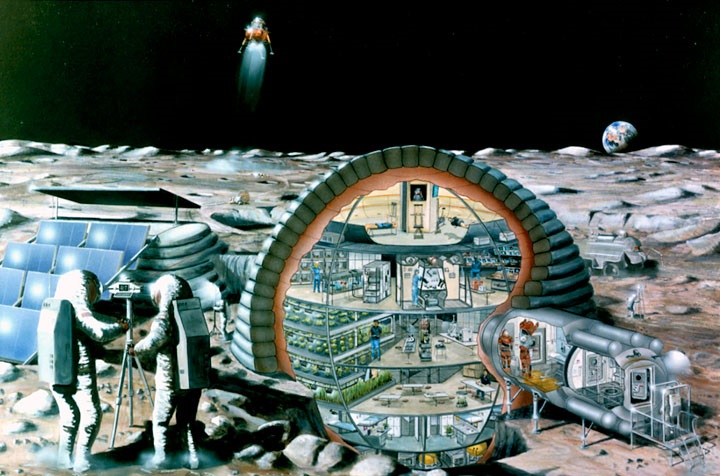Part Two of Three Parts: (Please read Part One first)
In the first part of this post, I talked about the NASA focus on visiting Mars and suggestions by a conference on lunar exploration that visiting and setting up a manned base on the Moon before a Mars mission would make more sense. Today I am going to go into more detail about technologies that would make that possible and practical.
It has been suggested that virtual reality could be a powerful tool for planning and training for a permanent manned lunar base. VR could be combined with CAD/CAM, additive manufacturing and 3-D printing for an advanced planning environment to model and perfect the structures needed for a lunar base. Many problems could be explored and solved before setting off for the Moon.
Up to now, very expensive devices, materials and processes have been developed on a one-off basis for use in space missions. Later, some of these have been adapted for consumer products. One way of reducing the cost of devices, materials and processes for new space missions such as a manned lunar base would be to invert the old procedure and adapt existing consumer products for use in space.
I have already written about inflatable habitat modules that are being tested on the Internation Space Station. Planners are considering the use of inflatable habitats from Bigelow Aerospace for use on a lunar base. While Biogelow is focused on creating inflatable modules for use in Earth orbit, the light weight, compact shipping configuration and easy setup of these modules make them ideal for the first habitats at a lunar base. Big 3-D printers could be used later to create more permanent and sturdy shelters.
Human beings have been living on the International Space Station for fourteen years. During that time, the technology necessary for basic life support has been perfected. Water can be efficiently recycled and oxygen balanced with carbon dioxide. Current estimates based on prices charged by SpaceX for cargo delivery suggest that the necessary food and other supplies for a staff of ten at a manned lunar base would cost about three hundred and fifty million dollars a year. Small 3-D printers could be used at the base for the production of small parts to reduce shipping costs.
Some of the new systems needed for a lunar base do not exist yet but are in development and should be available soon. SpaceX is working on a heavy launch vehicle called the SpaceX Heavy for major payloads and it should be available for use in the near future. Refuelling spacecraft in Earth orbit for missions to the Moon is another possibility that is in development.
By combining existing off the shelf technologies with new technologies currently under development, it should be possible to build, equip and supply a manned lunar base at a fraction of the cost that would have been required even ten years ago.
Please read Part 3
